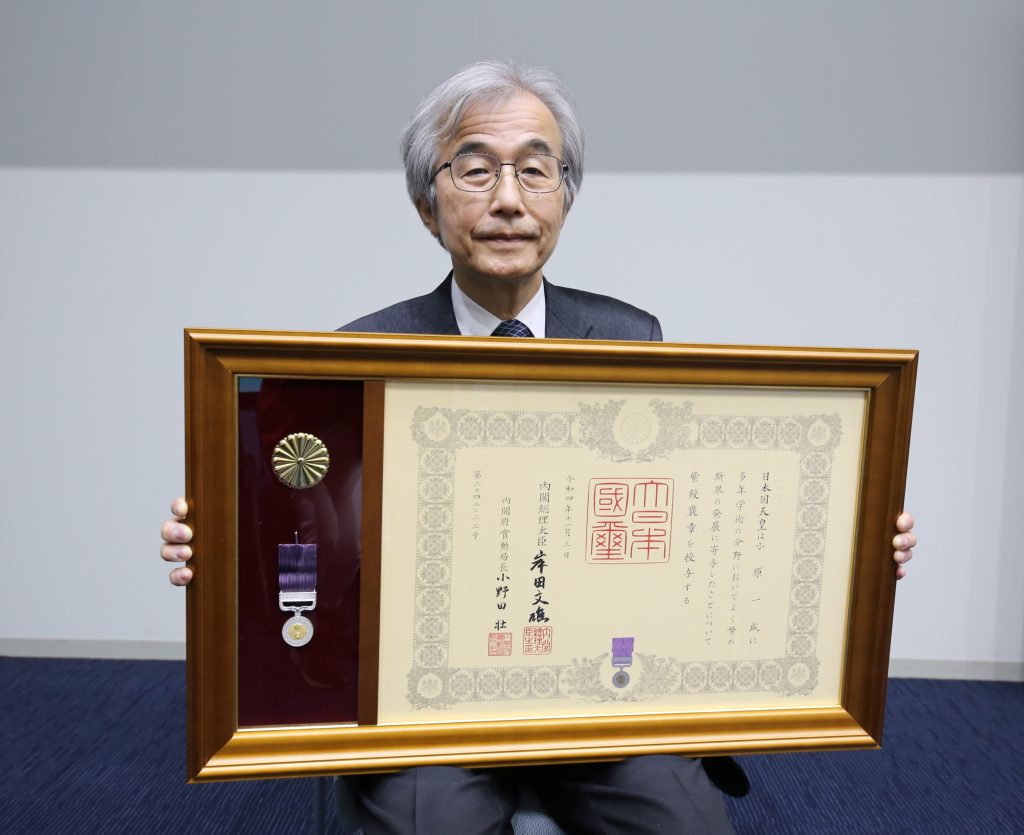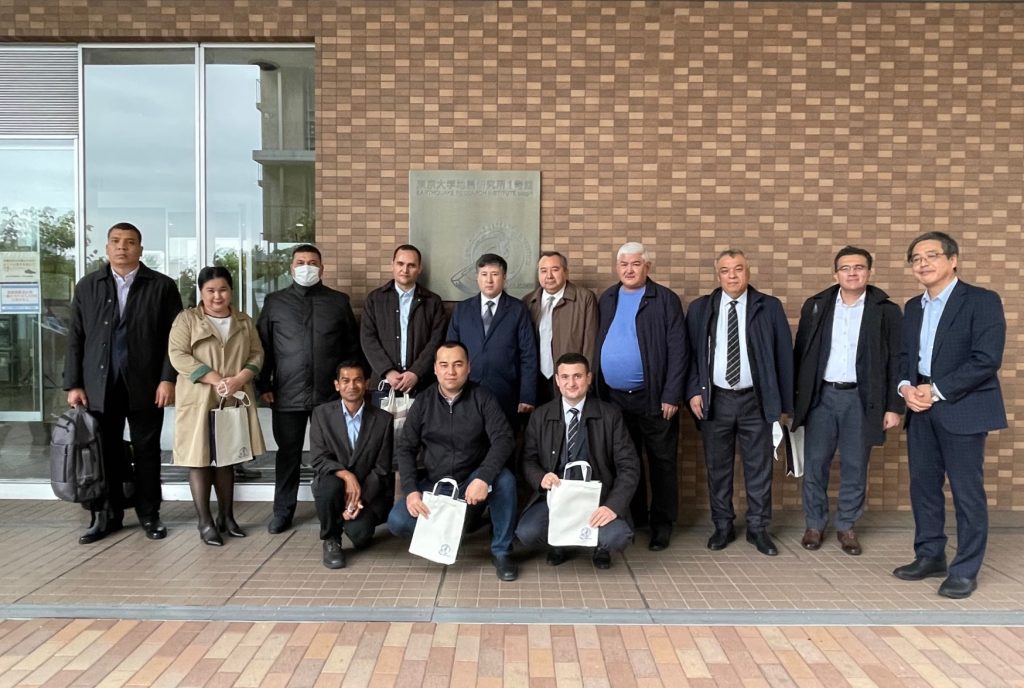井田 喜明 名誉教授が、令和4年秋の瑞宝中綬章を受賞しました。
内閣府HP・令和4年秋の叙勲受章者名簿:https://www8.cao.go.jp/shokun/hatsurei/r04aki/meibo_jokun/zuiho-chujusho.pdf
井田 喜明 名誉教授が、令和4年秋の瑞宝中綬章を受賞しました。
内閣府HP・令和4年秋の叙勲受章者名簿:https://www8.cao.go.jp/shokun/hatsurei/r04aki/meibo_jokun/zuiho-chujusho.pdf
小原 一成 教授が、令和4年秋の紫綬褒章を受章しました。
受賞内容:深部低周波微動を端緒とした各種スロー地震の発見・解明に基づくスロー地震学の創成
東京大学HP: https://www.u-tokyo.ac.jp/ja/research/systems-data/honors_2022_02.html

2022年10月25日(火)ウズベキスタン科学アカデミー副所長以下12名が地震研究所を来訪しました。
一時間の短時間でしたが、ウイジエラジ マッデゲデラ ラリス准教授による都市の地震動シミュレーションに関する講演に参加者の多くが興味を持って質問されていました。
また、今後の地震に関する共同研究の意向も示されました。


物質科学系研究部門 三浦弥生助教が参加している論文:Ryugu particles found outside the Hayabusa2 sample container (Geochemical Journal. doi.org/10.2343/geochemj.GJ22017)が、東京大学理学系研究科よりプレスリリースされました。
物質科学系研究部門 三浦弥生助教が参加している論文:Noble gases and nitrogen in samples of asteroid Ryugu record its volatile sources and recent surface evolution (Science. DOI: 10.1126/science.abo0431) が、JAXAよりプレスリリースされました。
詳細(JAXAホームページ):https://www.jaxa.jp/press/2022/10/20221021-1_j.html
東京大学理学部ホームページ:https://www.s.u-tokyo.ac.jp/ja/press/2022/8108/
物質科学系研究部門 三浦弥生助教が参加している論文: First asteroid gas sample delivered by the Hayabusa2 mission: A treasure box from Ryugu (Science Advances. DOI: 10.1126/sciadv.abo7239)が、JAXAよりプレスリリースされました。
詳細(JAXAホームページ):https://www.jaxa.jp/press/2022/10/20221021-2_j.html
公募内容や応募方法について、2022年10月4日に「共同利用・共同研究公募オンライン説明会」を開催しました。その時の動画および質疑応答を紹介いたします。
https://www.eri.u-tokyo.ac.jp/kyodoriyou/2023setsumei/
下記のとおり地震研究所談話会を開催いたします。
ご登録いただいたアドレスへ、開催当日午前中にURL・PWDをお送りいたします。
なお、お知らせするzoomURLの二次配布はご遠慮ください。また、著作権の問題が
ありますので、配信される映像・音声の録画、録音を固く禁じます。
記
日 時: 令和4年10月21日(金) 午後1時30分~
開催方法: インターネット WEB会議
○発表者
※時間は質問時間を含みます。
※既に継続参加をお申し出いただいてる方は、当日zoomURLを自動送信いたします。
※談話会のお知らせが不要な方は下記までご連絡ください。
東京大学地震研究所 共同利用担当
E-mail:k-kyodoriyo(at)eri.u-tokyo.ac.jp
※次回の談話会は令和4年11月18日(金) 午後1時30分~です。
1.発表のポイント:
・ミュオグラフィを用いて台風の観測に世界で初めて成功した。
・台風の透視により、温暖核を捉えることに成功した。
・将来、台風の早期警報システムに貢献できると期待される。
2.発表概要:
東京大学国際ミュオグラフィ連携研究機構は、同大学生産技術研究所、大気海洋研究所、大学院新領域創成科学研究科、および英国シェフィールド大学、英国ダラム大学、イタリア原子核物理学研究所、イタリアカターニャ大学、ハンガリーウィグナー物理学研究センター、チリアタカマ大学、フィンランドオウル大学と共同で、世界で初めて台風の透視に成功した。
ミュオグラフィは、宇宙に由来する高エネルギー素粒子ミュオンを用いて巨大物体を透視する技術である。これまで火山、原発、ピラミッド、気象津波などの陸域、海域の透視に成果を上げているが、大気現象の観測に用いられたのは、今回が初めてである。ミュオグラフィを用いることで遠方の台風の内部構造をイメージングできるため、将来、台風の早期警報システムへの応用が期待される。